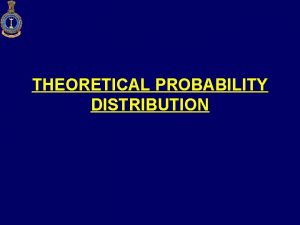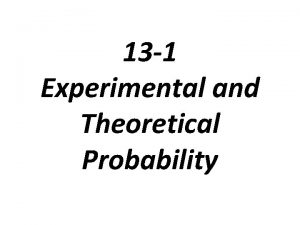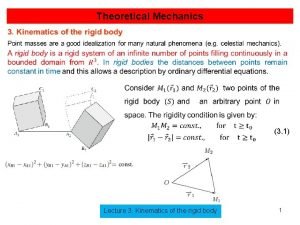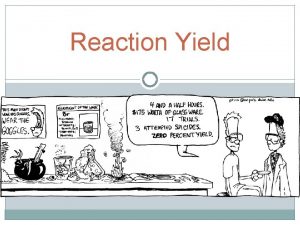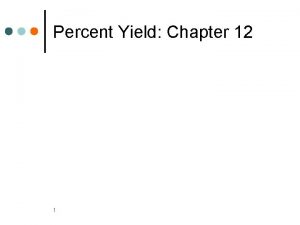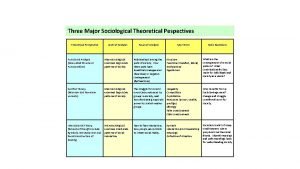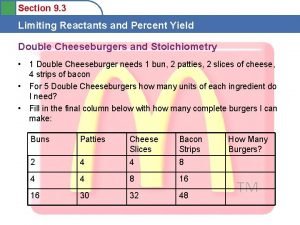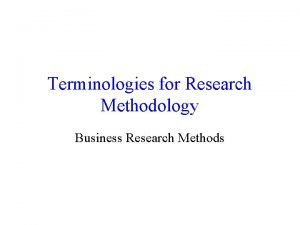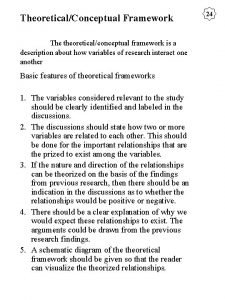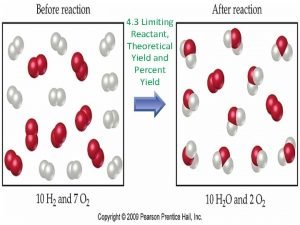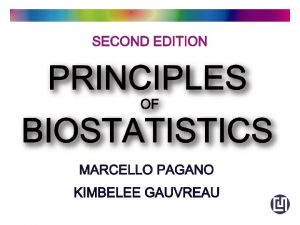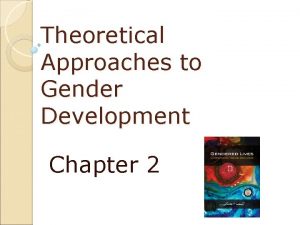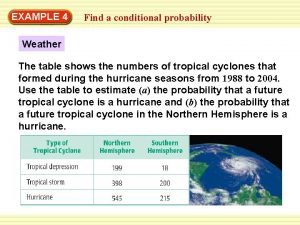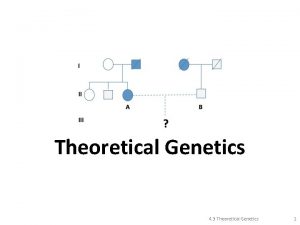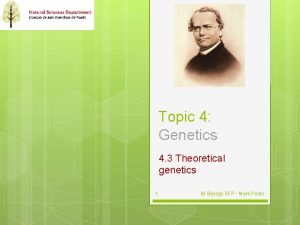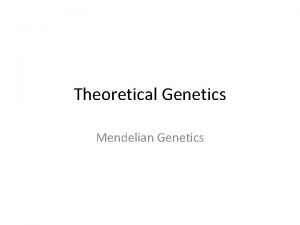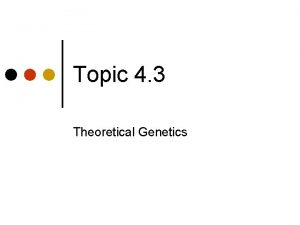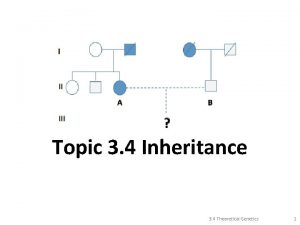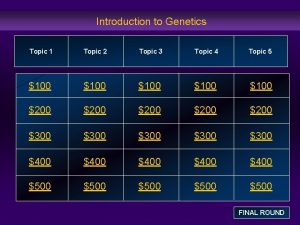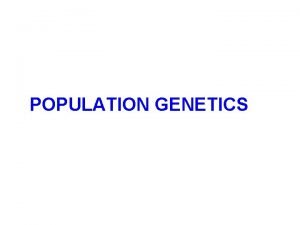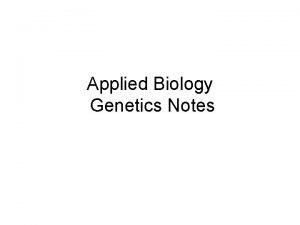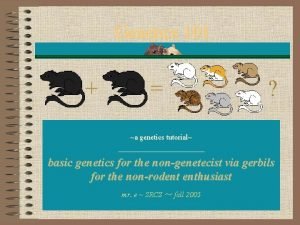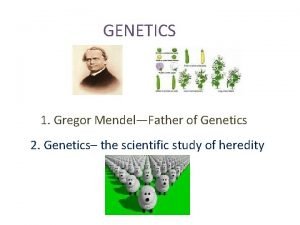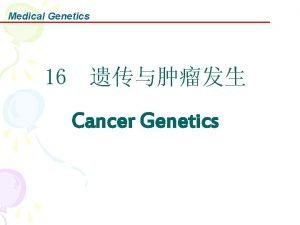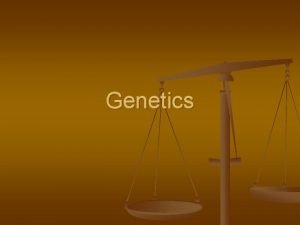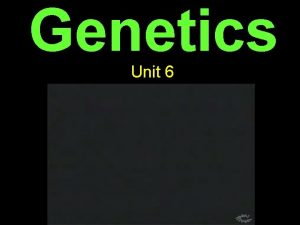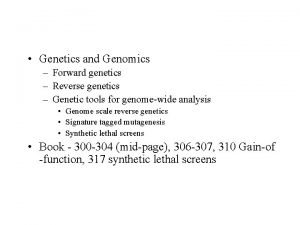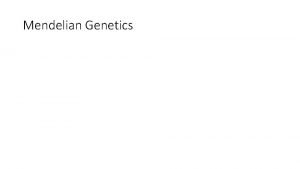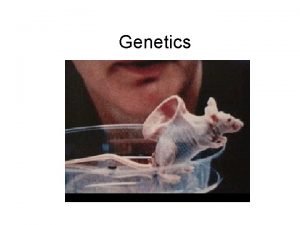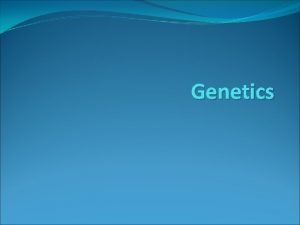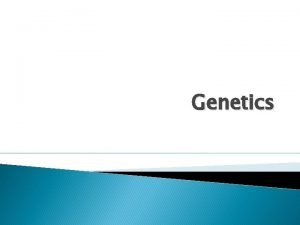Topic 4 3 Theoretical Genetics Topic 4 Genetics








































- Slides: 40

Topic 4. 3: Theoretical Genetics Topic 4: Genetics

Get them from your book


ble i s s e po first h t ite e out r w ays enotyp s w l p: A and g a cros i t s g m Exa notype n doin whe phe

You can write the phenotype instead of drawing it. Write out the phenotype, genotype and gametes first to show your working. Use this same format each time you do a test cross. Describing the genotype and phenotype of the F 1 generation is really important


Practise • Do a monohybrid cross using these genotypes: • YY and Yy • yy and Yy • Use the correct format to draw them out

More practise • Try to predict the outcomes of these crosses: • Y = yellow y = green • R = round r = wrinkled • Bear in mind that there are two alleles to consider… Draw a punnett square (using the correct format) to help you.

Test crosses • We can use this theory to do a “test cross” to find out if an organism is homozygous or heterozygous. • Try this question: • Flowers have 2 colours: – Red = R – White = r • Which colour is dominant? • What are the possible genotypes and phenotypes?

Test Cross • We have a red flower but don’t know its genotype. What are the possibilities? • How could we use a white flower to find out? • Draw Punnett Squares to illustrate your answer. • Hint – you will have to draw 2 Punnett Squares – one for each possibility.


Multiple alleles • Most genes are not limited to having only two alleles – they have multiple alleles. • E. g. Blood Group type alleles • The gene for blood group is called “I” but there are 3 alleles – IA – IB –i

ABO Blood Types • Blood type is an example of a gene that can be CODOMINANT. • These means that 2 of these alleles are equally as strong as each other. • If someone inherits one of each of these codominant alleles they will have a mixed phenotype where both alleles are expressed.

ABO Blood Types • The three alleles again: – IA – IB –i Codominant Recessive • The codominant alleles will both affect the phenotype but the recessive allele will only affect it when homozygous. • There are 4 blood types: A, B, AB and O

ABO Blood Types Phenotype Genotype A IA i B AB O ii

Distribution of ABO blood groups world wide • http: //www. aboblood. com/

ABO Blood Types • We can use a Punnett Square to show a man with Blood type A and a woman with blood type B can produce all the four blood types:

ABO Blood Types IA IB i IB I Group AB Group B IA I ii Group A Group O

ABO Blood Types • Use a Punnett Square to show why a man with Blood type O and a woman with blood type AB cannot have children with either of the parents blood types.

Complete the Punnet grid



To see colour, several protein pigments are required in the eyes to absorb the different wavelengths of light. The code for making these pigments is on genes found mainly on the X chromosome. A normal allele of the gene will allow the pigments to be made. A recessive allele of the gene will not allow them to form.


B b B B B b b B

B b B B B b b B B Draw punnet grids for questions a and b. Colour blind male

The inheritance of Haemophilia is the same as the inheritance of colour blindness

• Hi! My name is Moonah. I want to be a football player but I cant, because I have hemophilia, a very painful blood disorder. If I get hurt, my blood does not clot. I need injection every time I get hurt and bleed. And that is very expensive. But the hemophilia society helps papa get it. Papa says it prevents me from becoming disabled. Uau. Thats beautiful. Moonah, needs your help. Will you be his friend and support?

Notation • The gene is shown as the large letter. • Alleles are shown as superscript letters. • Co-dominant alleles are both written with a superscript capital letter e. g. IB IB • Dominant alleles are written with a capital superscript letter e. g. XH • Recessive alleles are written with a small superscript letter e. g. Xh • X-linked alleles always have X as the large letter

Add the notations to the chromosomes ? ? ? ? ? B = Normal vision b = affected vision H = Normal allele h = Haemophilia allele

B B B b b b B = Normal vision b = affected vision H = Normal allele h = Haemophilia allele

Terminology for sex linked genes • Females can be heterozygous or homozygous (dominant or recessive) • Males have only one X chromosome so cannot be homozygous or heterozygous. • If a female is heterozygous for a trait which is determined by a recessive allele she is said to be a carrier. She can pass on the trait to her offspring but will show no signs of it herself. • Males cannot be carriers. They either have: – one normal allele (dominant) and no trait or – one defective (recessive allele) and show the trait.

Pedigree Charts • Pedigree charts plot the generations of a family and can be used to trace a genetic disease.

Symbols used in Pedigree charts • What can we deduce about the parents? • From that, what can we deduce about this genetic disease?

Dominant or Recessive? • If the disorder is dominant one of the parents must have the disorder

Dominant or Recessive? • If the disorder is recessive neither parent needs to have the disease – they could both be heterozygous

X-linked pedigree charts • If the disease is X-linked, most of the males in the chart will have the disease. • If it is a 50/50 ratio then the disease is likely to be autosomal.

Autosomal or sex linked?

Constructing a Pedigree chart • Create a pedigree chart to show a couple who have 3 children (all boys). The second boy is married with 2 children (both girls). • The mother is a carrier of an autosomal genetic disease. She passes this on to her second and third sons. • The second son marries a carrier of the same disease. • Their first child has the disease.

 How to write a clincher sentence
How to write a clincher sentence Narrow
Narrow Theoretical high school
Theoretical high school Major perspective in sociology
Major perspective in sociology Theoretical probability distribution
Theoretical probability distribution Theoretical probability
Theoretical probability Uses of hplc chromatography
Uses of hplc chromatography Percent yield def
Percent yield def Theoretical framework example
Theoretical framework example Theoretical probability questions
Theoretical probability questions How to write theoretical framework
How to write theoretical framework Theoretical models of counseling
Theoretical models of counseling Experimental probability examples
Experimental probability examples 13-1 experimental and theoretical probability
13-1 experimental and theoretical probability Theoretical wisdom
Theoretical wisdom Plate theory and rate theory
Plate theory and rate theory Types of grounded theory design
Types of grounded theory design Mesoamerican center for theoretical physics
Mesoamerican center for theoretical physics Theoretical framework and conceptual framework example
Theoretical framework and conceptual framework example Theoretical mechanics
Theoretical mechanics Experimental probability
Experimental probability Theoretical yield def
Theoretical yield def Actual yield
Actual yield Theoretical perspectives in sociology
Theoretical perspectives in sociology Great theoretical ideas in computer science
Great theoretical ideas in computer science Theoretical air fuel ratio
Theoretical air fuel ratio Limiting reactant and percent yield
Limiting reactant and percent yield What are variables in research methodology
What are variables in research methodology Conceptual framework with intervening variable
Conceptual framework with intervening variable Explain types of research
Explain types of research Theoretical foundation of international business
Theoretical foundation of international business Theoretical yield
Theoretical yield Cs graph theory
Cs graph theory Great theoretical ideas in computer science
Great theoretical ideas in computer science Theoretical probability distribution table
Theoretical probability distribution table Great theoretical ideas in computer science
Great theoretical ideas in computer science Theoretical framework vs conceptual framework
Theoretical framework vs conceptual framework Limitation of hsab principle
Limitation of hsab principle Psychodynamic theories definition
Psychodynamic theories definition Theoretical perspectives on the family
Theoretical perspectives on the family What is random experiment
What is random experiment




